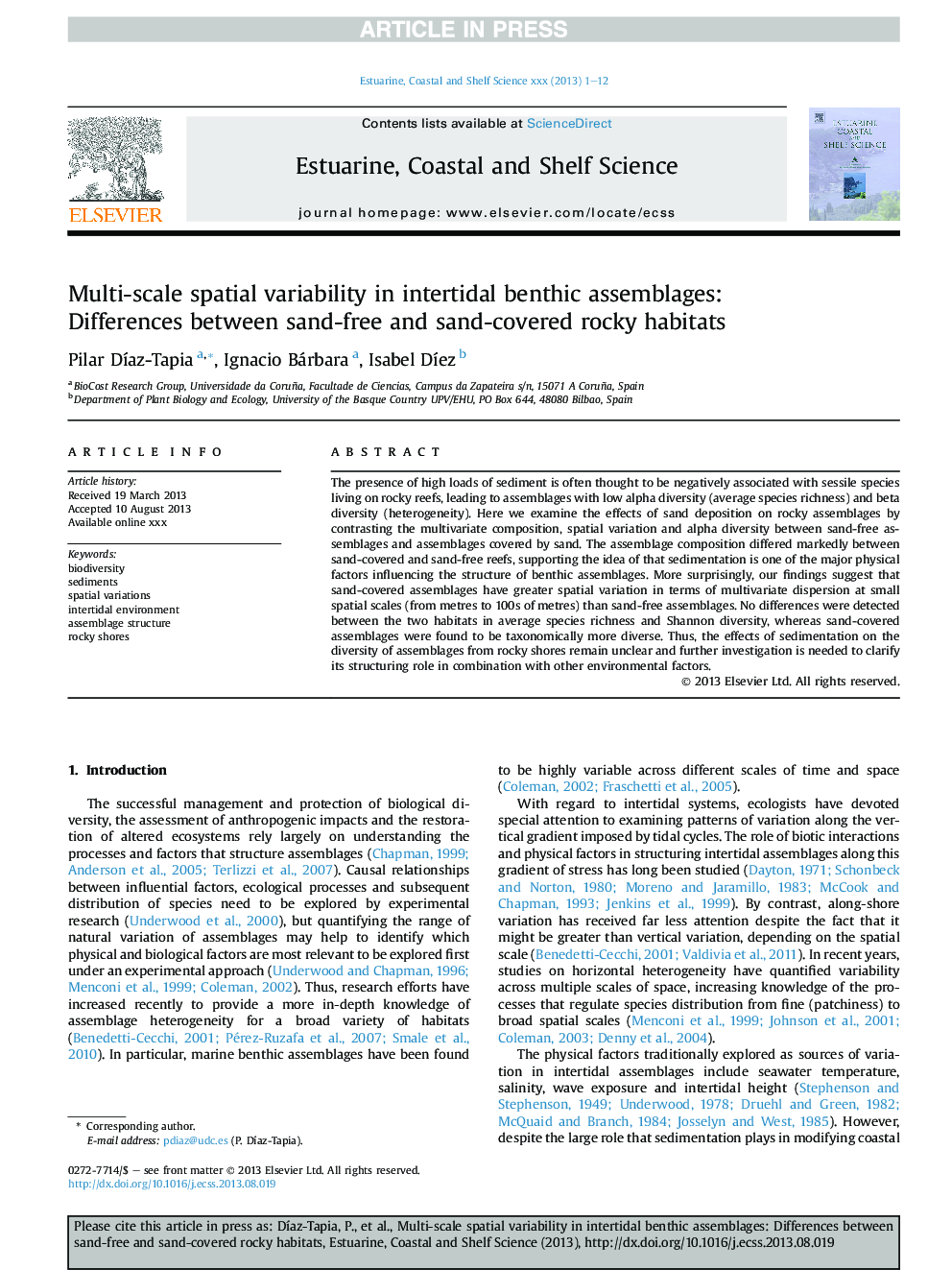| Article ID | Journal | Published Year | Pages | File Type |
|---|---|---|---|---|
| 6385028 | Estuarine, Coastal and Shelf Science | 2013 | 12 Pages |
Abstract
The presence of high loads of sediment is often thought to be negatively associated with sessile species living on rocky reefs, leading to assemblages with low alpha diversity (average species richness) and beta diversity (heterogeneity). Here we examine the effects of sand deposition on rocky assemblages by contrasting the multivariate composition, spatial variation and alpha diversity between sand-free assemblages and assemblages covered by sand. The assemblage composition differed markedly between sand-covered and sand-free reefs, supporting the idea of that sedimentation is one of the major physical factors influencing the structure of benthic assemblages. More surprisingly, our findings suggest that sand-covered assemblages have greater spatial variation in terms of multivariate dispersion at small spatial scales (from metres to 100s of metres) than sand-free assemblages. No differences were detected between the two habitats in average species richness and Shannon diversity, whereas sand-covered assemblages were found to be taxonomically more diverse. Thus, the effects of sedimentation on the diversity of assemblages from rocky shores remain unclear and further investigation is needed to clarify its structuring role in combination with other environmental factors.
Keywords
Related Topics
Physical Sciences and Engineering
Earth and Planetary Sciences
Geology
Authors
Pilar DÃaz-Tapia, Ignacio Bárbara, Isabel DÃez,
